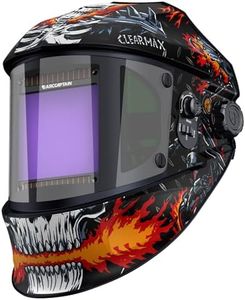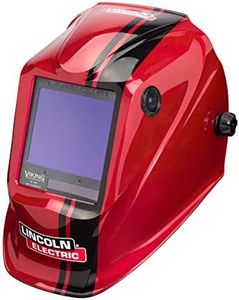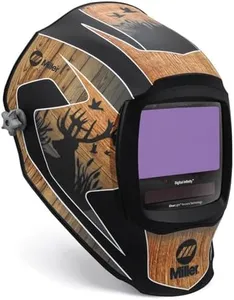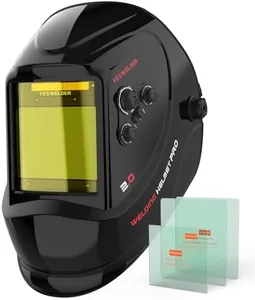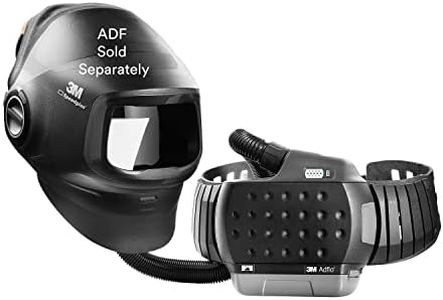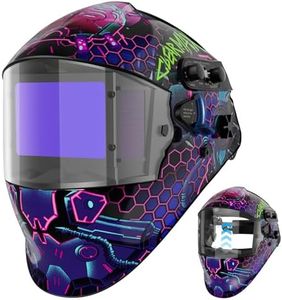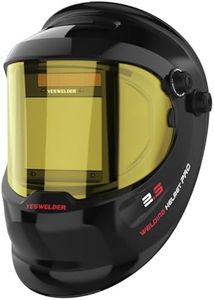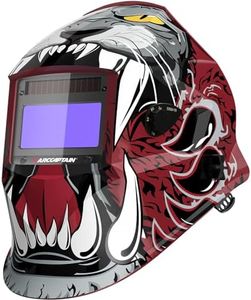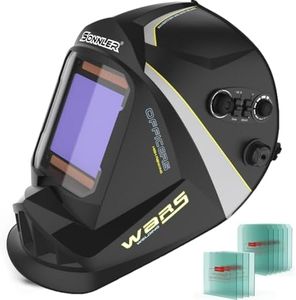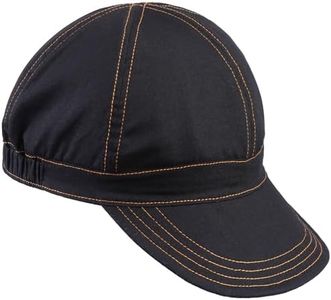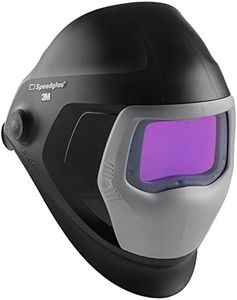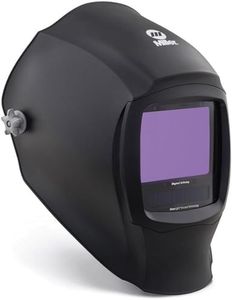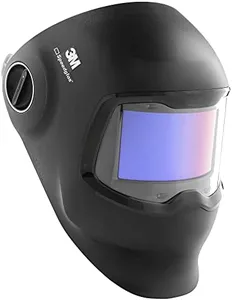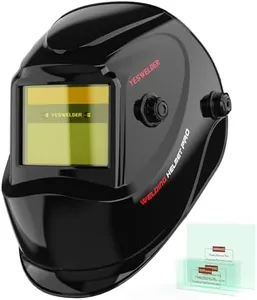10 Best Welding Helmets 2025 in the United States
Our technology thoroughly searches through the online shopping world, reviewing hundreds of sites. We then process and analyze this information, updating in real-time to bring you the latest top-rated products. This way, you always get the best and most current options available.

Our Top Picks
Winner
Lincoln Electric VIKING 3350 Code Red Welding Helmet
Most important from
3029 reviews
The Lincoln Electric VIKING 3350 Code Red welding helmet is a solid choice for welders looking for high-quality optics and comfort. It features a large 12.5 square inch viewing area with advanced 4C lens technology, providing very clear vision and accurate shade adjustments which help protect your eyes during different welding tasks. The helmet is designed with a comfortable X6 headgear that spreads the weight evenly to reduce pressure, making it easier to wear for long periods.
It includes an external grind control, allowing you to switch easily between welding and grinding without removing the helmet, which can improve productivity. The helmet runs on a lithium metal battery and includes safety certifications, ensuring reliable performance and protection. Its lightweight design (around 1.4 pounds) and balanced fit add to the comfort. One thing to keep in mind is that the helmet is a large size, so it might not fit smaller heads as well without adjustment.
The 5-year warranty also shows the brand’s confidence in the product’s durability. This helmet is well suited for professional welders or serious hobbyists who need versatile performance across various welding and cutting processes. If you are looking for something ultra-lightweight or with a smaller viewing area, there might be other options to consider.
Most important from
3029 reviews
ESAB® Sentinel™ A60 Welding Helmet, Black Low-Profile Design, High Impact Resistance Nylon, Large Viewing Area 4.65 in x 2.80 in
Most important from
303 reviews
The ESAB Sentinel A60 Welding Helmet is designed for welders looking for a reliable and advanced protective gear. One of its standout features is the large viewing area of 4.65 x 2.80 inches, which provides excellent visibility while you work. The auto-darkening filter (ADF) reacts quickly with a fast switching time of just 0.08 milliseconds, allowing for clear vision in different lighting conditions. This helmet also boasts the ESAB OpTCS True Color Lens Technology that enhances color recognition, making it easier to see the details of your welding work.
Adjustability is a strong point, with the ADF shade range from DIN 3/5 to 13, allowing you to customize your protection based on the specific task. The helmet includes intuitive on-board memory for up to nine settings, which is great for those who switch between different welding processes. It’s also equipped with multiple arc sensors (four in total), increasing its responsiveness.
The helmet weighs 3.72 pounds, which might feel a bit heavy during extended use, potentially leading to fatigue. While the nylon construction offers high impact resistance, some users might prefer a different material for added comfort. Additionally, the reliance on a replaceable CR2450 battery means you’ll need to keep an eye on power levels, although the low battery indicator does help with that. The design is modern and low-profile, making it visually appealing, but the fit and comfort can vary based on personal preference. It comes with a one-year warranty on material and workmanship, providing peace of mind for your investment.
Most important from
303 reviews
Miller 296783 Digital Infinity Auto Darkening Welding Helmet with ClearLight 4x Lens, Outdoorsman
Most important from
15 reviews
The Miller 296783 Digital Infinity welding helmet is designed for welders who value clear visibility and precise control during their work. Its ClearLight 4x lens technology provides significantly better clarity compared to many other helmets, helping you see the welding area with more detail and less strain on your eyes. The viewing area is a decent 13.4 square inches, giving a good field of vision without making the helmet bulky.
One of the standout features is the AutoSense function, which automatically adjusts the helmet’s sensitivity to the lighting environment, reducing the hassle of manual adjustments. This helmet also offers four arc sensors and multiple modes—including weld, cut, grind, and a special X-Mode that helps reduce interference from sunlight, which is great for outdoor use. Digital controls and memory settings allow you to customize the shade, delay, and sensitivity easily, so you can switch quickly between your preferred settings.
The helmet is relatively heavy at 12 pounds, which might cause some discomfort during long periods of use. It is made from sturdy polycarbonate plastic but might feel bulkier compared to lighter models. This helmet is a strong choice for experienced welders who work in varied conditions and want advanced features to improve visibility and control, but casual or light users might find it heavier and more complex than needed.
